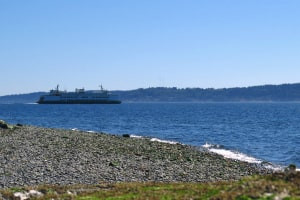The International Maritime Organization (IMO) is a specialised agency of the United Nations and it governs marine conventions and codes. The establishment of the IMO coincided with a period of rapid change in the global shipping industry. The course teaches you about the main focus of the IMO and its function, structure and roles. We explain the brief history of the IMO and its various committees and subcommittees. This course will analyse the IMO Bulk Liquid and Gases (BLG) and Flag State Implementation (FSI) as well as The Radio Communications and Search and Rescue (COMSAR). In addition, we will outline the roles of the Stability and Load Lines and Fishing Vessel Safety (SLF) and Standards of Training and Watchkeeping (STW) and examine the technical problems faced by the IMO.
This course then describes the IMO conventions like the International Conventions for the Safety of Life at Sea 1974 (SOLAS), the Prevention of Pollution from Ships (MARPOL 73/78) and the Helsinki Convention. We introduce you to the international conventions on load lines 1996 and the international regulations for preventing collision at sea, amongst others. The course highlights the objectives for these conventions and some of their technical provisions. We explain the codes used at sea and the comprehensive set of measures used to enhance the security of ships and port facilities. Study the perceived threats to ships and port facilities in the wake of the 9/11 attacks in the United States. We identify the three security levels: ‘normal’, ‘heightened’ and ‘exceptional’, along with each level’s state measures.
Familiarise yourself with a ship owner’s responsibility under the ISPS, Continuous Synopsis Record (CSR) and the Ship Security Alert System (SSAS). Investigate the declaration of security, which should be completed before an interface starts between a vessel and a marine facility. Understand the convention for the control and management of ships ballast water and sediments and the methods used to treat ballast water. We explain the inspections carried out by the port state, along with how the feedback of deficiencies observed with the flag state is shared. We highlight some schemes like the Voluntary IMO Member State Audit Scheme and how it provides audited member states. You will learn about a comprehensive and objective assessment of how effectively key IMO conventions are administered and implemented. With the aid of a diagram, this course illustrates how the IMO, flag state, port state and recognised organisations collectively implement the IMO conventions. This course will notably interest students, researchers and anyone curious about IMO conventions and their operations. So register for this course and begin your learning experience.
What You Will Learn In This Free Course
View All Learning Outcomes View Less All Alison courses are free to enrol, study, and complete. To successfully complete this Certificate course and become an Alison Graduate, you need to achieve 80% or higher in each course assessment.
Once you have completed this Certificate course, you have the option to acquire an official Certificate, which is a great way to share your achievement with the world.
Your Alison certificate is:
- Ideal for sharing with potential employers.
- Great for your CV, professional social media profiles, and job applications.
- An indication of your commitment to continuously learn, upskill, and achieve high results.
- An incentive for you to continue empowering yourself through lifelong learning.
Alison offers 2 types of Certificate for completed Certificate courses:
- Digital Certificate: a downloadable Certificate in PDF format immediately available to you when you complete your purchase.
- Physical Certificate: a physical version of your officially branded and security-marked Certificate
All Certificate are available to purchase through the Alison Shop. For more information on purchasing Alison Certificate, please visit our FAQs. If you decide not to purchase your Alison Certificate, you can still demonstrate your achievement by sharing your Learner Record or Learner Achievement Verification, both of which are accessible from your Account Settings.











 Avg. Hours
Avg. Hours  Contains Video
Contains Video  CPD Accredited
CPD Accredited 
 Total XP:
Total XP: 
 Knowledge & Skills You Will Learn
Knowledge & Skills You Will Learn 







